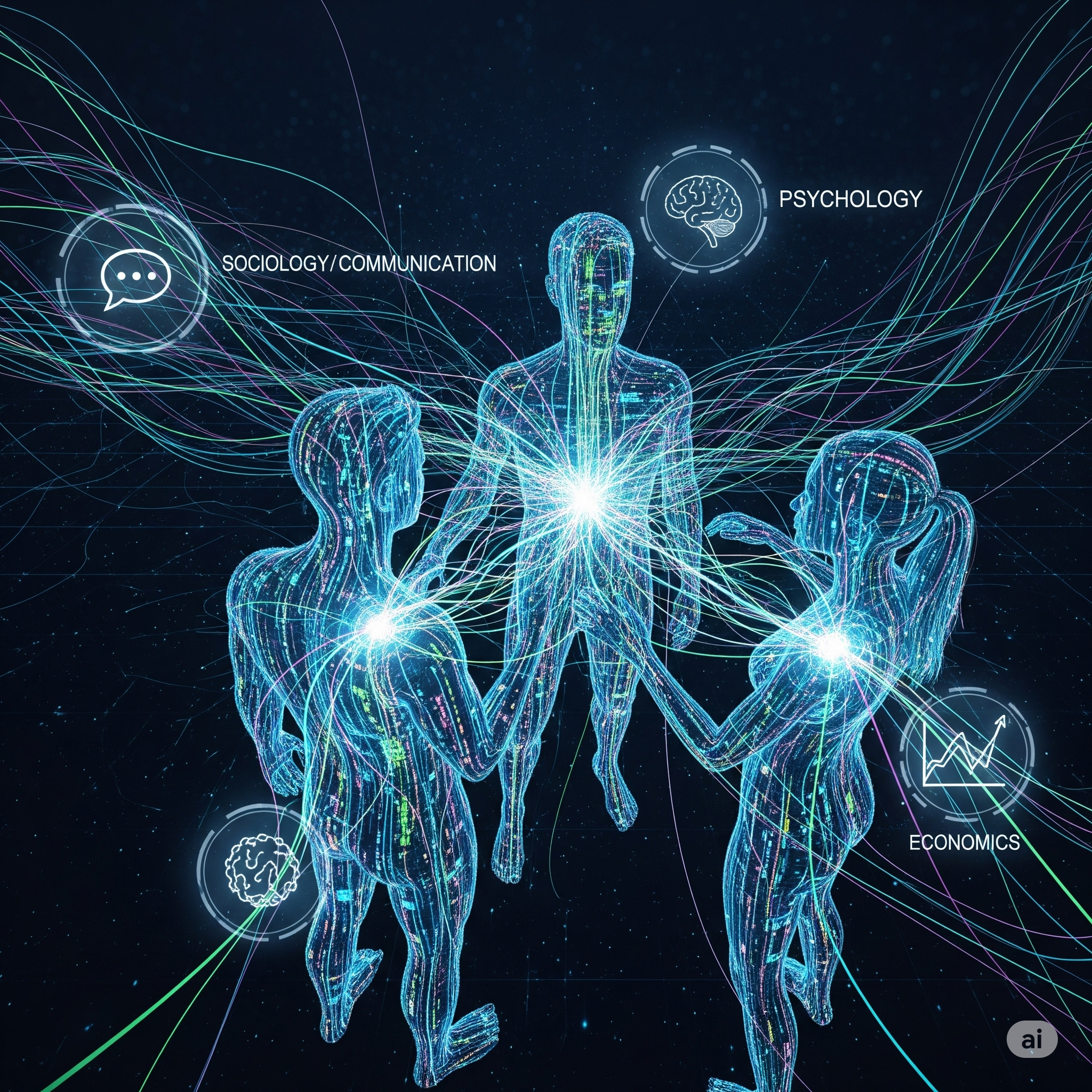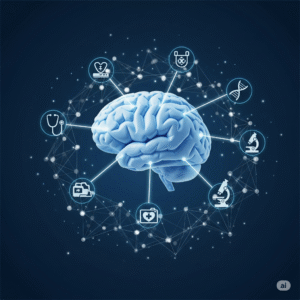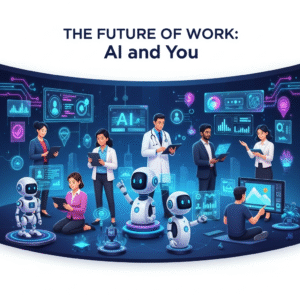For centuries, understanding the intricate tapestry of human behavior has been the central quest of social scientists. From the grand theories of sociology to the subtle nuances of individual psychology, researchers have painstakingly gathered data, conducted surveys, and analyzed observations to unravel the mysteries of why we act the way we do. But what if there was a tool powerful enough to sift through mountains of human data, identify hidden patterns, and provide insights with unprecedented speed and scale? (AI social science research)
Enter Artificial Intelligence. The rise of AI social science research is not just a technological upgrade; it’s a fundamental shift in how we approach the study of humanity. By leveraging the power of machine learning, natural language processing, and other AI techniques, researchers are now able to analyze vast datasets of human behavior in ways previously unimaginable. This is not about replacing human intuition and expertise; it’s about augmenting them, providing new lenses through which to view the complexities of our social world. Get ready to explore how AI social science research is opening up exciting new frontiers in understanding what makes us tick.
The Power of AI in Unraveling Human Complexity
The core strength of AI in the context of social sciences lies in its ability to process and analyze massive datasets far beyond human capacity. Think about the sheer volume of social media posts, news articles, survey responses, and economic indicators generated every single day. Sifting through this ocean of information to identify meaningful trends and correlations is a Herculean task for even the most dedicated research team.
AI social science research tools excel at this. They can identify subtle patterns in language, predict behavioral shifts based on historical data, and uncover relationships between seemingly disparate variables. This capability allows researchers to move beyond traditional, often limited, datasets and gain a more holistic and nuanced understanding of human behavior in various contexts. Furthermore, behavioral analytics AI, a key component of this field, provides powerful methods for predicting future actions based on past behavior patterns.
Specific Applications: Where AI is Transforming Social Science
The applications of AI social science research are incredibly diverse, spanning numerous disciplines and addressing a wide range of societal challenges.
Psychology: Understanding the Human Mind at Scale
In psychology, AI is being used to analyze text from therapy sessions to identify markers of mental health conditions, predict the likelihood of relapse, and even personalize treatment plans. Researchers are also using AI to analyze social media data and online behavior to study phenomena like collective emotions, the spread of misinformation, and the impact of digital environments on mental well-being. This use of AI social science research offers new avenues for understanding the human mind in its natural, digital habitat.
Sociology: Mapping Social Structures and Dynamics
Sociologists are leveraging AI to analyze large-scale social networks, understand patterns of migration and urbanization, and study the diffusion of cultural trends. Natural Language Processing helps in analyzing large volumes of text data, such as news articles and policy documents, to understand social discourse and identify underlying power structures. AI social science research provides tools to study society at a macro level, revealing insights into complex social dynamics.
Economics: Predicting Markets and Understanding Consumer Behavior
Economists are using AI to build sophisticated models for forecasting economic trends, analyzing financial markets, and understanding consumer behavior at an individual and aggregate level. Machine learning algorithms can identify factors influencing purchasing decisions, predict market volatility, and even help design more effective economic policies. The precision offered by AI social science research is transforming economic modeling and prediction.
Political Science: Analyzing Public Opinion and Predicting Election Outcomes
Political scientists are employing AI to analyze public opinion through social media and news sentiment analysis, predict election outcomes with greater accuracy, and study the spread of political narratives. AI tools can identify key influencers, understand the impact of political campaigns, and even detect signs of political polarization. AI social science research offers valuable insights into the complex world of political behavior.
Real-World Impact: Case Studies in AI Social Science Research
The transformative power of AI in social science is not just a theoretical concept. Here are examples of how it’s being applied in the real world:
Case Study 1: Analyzing Social Media for Mental Health Insights
Researchers at a leading university utilized Natural Language Processing (NLP) techniques to analyze millions of anonymized tweets. Their AI social science research aimed to identify linguistic patterns indicative of individuals experiencing symptoms of depression and anxiety. The AI identified specific word choices and sentiment shifts that correlated with self-reported mental health struggles. This project provided valuable insights into the early detection of mental health issues and highlighted the potential of using publicly available data for large-scale psychological studies. The team published their findings in a peer-reviewed journal, contributing significantly to the field.
Case Study 2: Predicting Consumer Behavior with Machine Learning
A major online retailer implemented behavioral analytics AI to better understand and predict customer purchasing patterns. By analyzing past purchase history, browsing behavior, and demographic data, their machine learning algorithms identified key factors that influenced buying decisions for different product categories. This AI social science research allowed them to personalize marketing efforts, recommend relevant products, and optimize their inventory management, leading to a significant increase in sales and customer satisfaction. Their data science team regularly uses tools like scikit-learn in Python to build and refine these predictive models.
Essential Tools for the AI-Powered Social Scientist
To harness the power of AI social science research, researchers need access to the right tools. Here are some essential categories and examples:
- Programming Languages and Libraries:
- Python: The workhorse of data science and AI, with a vast ecosystem of libraries.
- R: Another popular language for statistical computing and data visualization.
- Libraries: Pandas (data manipulation), NumPy (numerical computing), Scikit-learn (machine learning), NLTK and SpaCy (Natural Language Processing), TensorFlow and PyTorch (deep learning).
- Data Analysis and Visualization Platforms:
- Tableau: Powerful data visualization tool that integrates with AI models. (https://www.tableau.com/)
- Microsoft Power BI: Another leading platform for business intelligence and data visualization with AI capabilities. (https://powerbi.microsoft.com/)
- Google Colab: A free, cloud-based Jupyter notebook environment ideal for running Python and AI/ML experiments. (https://colab.research.google.com/)
- Cloud Computing Platforms:
- Google Cloud AI Platform: Provides scalable infrastructure for training and deploying AI models. (https://cloud.google.com/ai-platform)
- Amazon SageMaker: A fully managed machine learning service. (https://aws.amazon.com/sagemaker/)
- Microsoft Azure Machine Learning: Offers a suite of tools for building, training, and deploying ML models. (https://azure.microsoft.com/en-us/services/machine-learning/)
- Generative AI for Research Assistance:
- ChatGPT (OpenAI): Can assist with literature review summaries, brainstorming research questions, and even drafting code snippets. (https://openai.com/chatgpt) As noted by OpenAI, these tools can significantly accelerate the initial stages of research.
Getting Started with AI in Your Social Science Research
Integrating AI into your social science research doesn’t have to be a daunting task. Here are some beginner-friendly tips and workflows:
- Start with a Specific Question: Identify a research question that could potentially benefit from the analysis of large datasets.
- Focus on Accessible Tools: Begin with user-friendly platforms like Google Colab and libraries like Pandas for initial data exploration and analysis in Python.
- Leverage Pre-trained Models: For tasks like sentiment analysis or text classification, consider using pre-trained AI models available through libraries like Hugging Face Transformers. This can save significant time and effort.
- Collaborate with Data Scientists: If you lack extensive programming or machine learning expertise, consider collaborating with data scientists who can provide the technical skills needed for your project.
- Prioritize Ethical Considerations: Always be mindful of the ethical implications of using AI in social science research, particularly regarding data privacy, bias in algorithms, and the potential for misuse of findings. As emphasized by resources like the Zapier blog on responsible AI, ethical considerations should be at the forefront.
Conclusion: The Future of Social Science is Intelligent
The fusion of artificial intelligence and social science is ushering in a new era of discovery. AI social science research offers unprecedented opportunities to understand the complexities of human behavior, social dynamics, and economic systems. By leveraging the power of behavioral analytics AI and a growing array of accessible tools, researchers can now tackle questions that were once beyond our reach.
While AI will undoubtedly continue to evolve and become more sophisticated, the core of social science research—the human curiosity to understand ourselves and our societies—remains central. AI serves as a powerful amplifier, enabling us to ask bolder questions, analyze data with greater precision, and ultimately gain deeper insights into the fascinating world of human behavior. The future of social science is intelligent, and it promises to unlock a wealth of knowledge that can help us build a more informed, equitable, and understanding world.
AI Data Scientist Tools: These 5 AI Tools Are Changing Data Science



